A team of scientists has just acquired a massive grant to create materials strong enough to withstand the blistering heat and radiation inside a fusion reactor, where temperatures soar beyond one hundred and eighty million degrees Fahrenheit.
The U.S. Department of Energy’s Advanced Research Projects Agency-Energy (ARPA-E) allocated two million three hundred thousand dollars to the University of Kentucky to lead the development of next-generation materials that could make commercial fusion power a reality.
The project will tackle one of the biggest hurdles in the quest for limitless clean energy. It will be managed by Dr. John Balk, Director of the Materials Science Research Priority Area and W.T. Bryan Professor of Materials Engineering at the University of Kentucky’s Stanley and Karen Pigman College of Engineering.
Balk said, “This is a great opportunity for the expertise of our team behind the Materials Science Research Priority Area to solve one of the key challenges in radiation-heavy industries: how to enhance thermal conductivity without sacrificing material strength.” His team aims to make fusion power commercially viable.
To achieve this, their goal is to develop a class of first wall materials that form the inner wall of a fusion reactor and contact the plasma, which will maintain performance over the lifetime of a fusion power plant. They will explore promising alloy formulas and manufacturing processes to enhance the strength and resilience of this critical barrier.
No existing materials can endure the extreme conditions required for commercial fusion power. The project will focus on developing advanced composites for high-radiation environments.
Balk emphasized the challenge of working with tungsten (W) which is a metal with one of the highest melting points on Earth but is also prone to brittleness. By combining tungsten with other metals like chromium (Cr) or tantalum (Ta), he intends to create a high-melting alloy that is significantly more durable and better suited for fusion reactor conditions.
Balk revealed that “We’re going to make materials that are based on porous tungsten-based alloys, but they’re optimized for the mechanical and thermal properties we want. We’re going to backfill them with a high-thermal-conductivity ceramic at small length scales so that the radiation damage can be shed more easily to the interfaces.”
Balk added, “Materials research is critically important and underpins many other science and engineering efforts, and this project is a good example of that impact.”
Dr. Beth Guiton is the Frank J. Derbyshire Professor of Materials Science and professor of chemistry at the College of Arts and Sciences. She emphasized the importance of the research and how the team intends to use machine learning to improve the material’s strength and radiation resistance.
Guiton explained, “Keeping the plasma contained without accidentally stopping the fusion reaction or damaging your reactor materials is a challenge and a huge roadblock in this work. The temperatures involved are sufficient to vaporize the structure should they come into contact with it, yet we need to be able to extract the enormous amount of energy evolved so that it can be useful.”
The chemistry expert said in a news release, “Balk’s work is important for Kentucky science; it’s important for fusion energy and for advancing U.S. energy technology. If a commercial fusion power plant is successfully created, you’ve solved cheap, clean, safe and abundant energy production.”
Evelyn Wang is the ARPA-E Director. She said, “ARPA-E is a leader in supporting technologies that could make commercial fusion a reality on a much shorter timescale,” adding that the project is one of thirteen selected by the agency for nearly thirty million dollars in combined funding.
Wang concluded, “CHADWICK expands our focus to making fusion power plants operationally and economically viable by developing a high performance and durable first wall.”
Category: Nuclear Fusion
-

Nuclear Fusion 118 – University Of Kentucky Researchers Are Working On Developing New Alloys For The Walls Of Fusion Reactors
-

Nuclear Fusion 117 – Helion Energy Is Planning On Constructing A Commercial Fusion Plant In Chelan County, Washington
Helion Energy is a fusion energy company based in Everett, Washington. In May 2023, Helion Energy announced a groundbreaking deal with Microsoft, marking the world’s first commercial agreement for fusion energy. Helion has announced plans to construct the world’s first fusion power plant in Malaga, Washington.
The company is working on developing a fifty-megawatt fusion power plant on land owned by the Chelan Public Utility District (PUD) near Rock Island Dam, along the Chelan County side of the Columbia River. The site has not been officially finalized yet, but discussions are progressing. The company plans to increase engagement with the community for this pioneering project.
The announcement of negotiations was made during a joint press conference at the Confluence Technology Center in Wenatchee, Washington. The public event included presentations by Helion Communications Director Jessie Barton, Chelan PUD’s Kirk Hudson, Chelan County Community Development Director Deanna Walter, and Jim Kuntz of the Chelan Douglas Regional Port Authority. The panelists discussed their respective agencies’ roles in exploring the potential for carbon-free energy sources in Chelan County.
Jessie Barton said, “We’re looking at developing a 50-megawatt fusion power plant on PUD-owned land, near Rock Island Dam, on the Chelan side of the Columbia River. Now, this isn’t an official site selection at this point, but we are at the point where we’re ready to bring in more community members and have a larger conversation about this potential project.”
A community event is planned for March 11th at the Mission View Elementary School, where additional details about the project will be made public. The company has set an ambitious timeline. It aims to begin construction this summer if the permitting process proceeds without delays, to generate fusion energy by 2028.
From Chelan PUD’s perspective, this project is a critical component of a broader strategy to meet future energy demands and expand beyond hydropower, which has traditionally been the region’s primary energy source. Kirk Hudson said, “We have all of our eggs in one basket with hydropower, which has served us very well, but the future is going to be much different than the past has been.”
Initially, the fusion power produced will support the purchase agreement with Microsoft. There are long-term plans to make this clean energy accessible to local customers. The Chelan PUD remains optimistic about the project’s growth and success, aiming for its benefits to extend to residents of Chelan County and the broader north-central Washington region. Formal discussions regarding agreements with Helion, including potential lease terms, will take place once the company is ready to begin construction.
Helion Energy expects to hire approximately one hundred and thirty workers during the initial construction phase, with around thirty staff needed for ongoing plant operations once the facility is complete.
Under the agreement with Microsoft, Helion intends to provide Microsoft with electricity generated from its fusion power plant by 2028. The deal shows confidence in Helion’s advanced fusion technology and its potential to deliver a reliable, carbon-free energy source.
This partnership aligns with Microsoft’s sustainability goals. It aims to secure clean energy for its operations. Helion’s progress has been further enhanced by significant funding, including a major investment in January 2025, to accelerate the development and deployment of fusion energy technology.
With the planned fusion power plant in Malaga, Washington, Helion is making significant progress toward making fusion energy a reality, reinforcing its commitment to revolutionizing the energy landscape by 2028. -

Nuclear Fusion 115 – Proxima Fusion Makes The Design Of Its Stellaris Stellarator Open Source
Proxima Fusion is a venture-capital-backed company working on making nuclear fusion a reality. It has open-sourced its reactor design in the journal Fusion Engineering and Design this week. Although the design is a highly technical piece of work involving a lot of engineering, the company wants to share this information with the fusion community, whether based in the U.S. or China.
In their bid to harness emission-free energy, scientists are working on developing nuclear fusion technology. Nuclear fission involves the splitting of atoms into lighter elements. Nuclear fusion works by fusing lighter atomic nuclei to form heavier elements. This releases huge amounts of energy without creating any carbon emissions or radioactive waste.
Nuclear fusion technology has shown great promise by delivering net energy gains on more than one occasion over the past few years. Research institutes and startups are now working to scale up that achievement and deploy it commercially to power the electrical grids. Much of the work in fusion energy research has taken place in the tokamak design of fusion reactors. Proxima’s approach is slightly different since it is a type of stellarator.
Tokamaks and stellarators use extremely strong electromagnets to confine and heat fusion plasma inside donut-shaped vessels. However, there is a significant difference in how they achieve this.
Tokamaks utilize a combination of electromagnets and current-induced plasma while stellarators operate only using magnets. This requires the stellarator vessel and magnet design to be much more complex while allowing the reaction to run continuously and safely.
Stellarators offer the advantage of continuous operation for longer durations and protection of materials from fatigue as opposed to tokamaks while also being simpler to operate.
About ten years ago, researchers at MIT showed how a commercial-scale fusion reactor using a tokamak design could be built. This was followed by a series of startups working with the tokamak approach to achieving nuclear fusion power.
Fusion energy technology has now reached another milestone moment, with the open-source release of a commercial-scale stellarator design.
Proxima Fusion was founded over two years ago. It is a spin-off from the Max Planck Institute of Plasma Physics (IPP). This institution developed the world’s most advanced stellarator prototype design, the Wendelstein 7-X.
Proxima Fusion is backed by the European Union, the German government, and venture capital. Proxima set out to design a commercial scale stellarator with a two-year timeline but achieved their goal within one year.
Dubbed Stellaris, the Proxima stellarator concept leverages stronger magnetic fields made possible using high-temperature superconducting (HTS) technology to build smaller stellarators without reducing energy output.
Using materials available in the existing supply chain ensures that the reactors can be built without waiting for a technology to become economically feasible and it brings the reality of fusion energy closer than before.
For publication, the Stellaris design has undergone detailed peer review and claims that it can overcome physics and engineering constraints through various simulations. The company is now ready to build a demonstrator plant called Alpha as early as 2031.
If all goes well, Proxima Fusion’s design could add power to our grids as early as the next decade. -
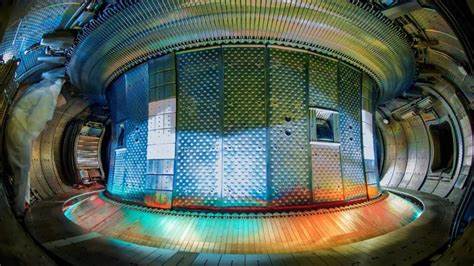
Nuclear Fusion 114 – Chinese And French Fusion Research Reactors Achieve Record Plasma Confinement – Part 2 of 2 Parts
Part 2 of 2 Parts (Please read Part 1 first)
France has taken a major leap forward in the race for nuclear fusion energy. It just achieved a new world record for plasma duration. On February 12th, 2025, scientists at the French Alternative Energies and Atomic Energy Commission (CEA) successfully sustained a plasma reaction for one thousand three hundred and thirty-seven seconds (over twenty-two minutes) inside the WEST tokamak reactor.
This breakthrough surpasses the previous record of one thousand and sixty-six seconds (eighteen minutes), set by China’s EAST tokamak in January 2025, marking a 25% improvement. It demonstrates the growing ability to control fusion reactions for extended periods, a critical step toward making fusion energy a practical power source.
Located at the CEA Cadarache site in southern France, WEST (W Environment in Steady-state Tokamak) is an advanced research facility designed to explore the conditions necessary for sustainable fusion power.
During this experiment, the plasma inside WEST reached temperatures of ninety million degrees Fahrenheit, which is hot enough to sustain nuclear fusion. The team also confirmed that the reactor’s plasma-facing components remained stable. This proved that materials can withstand prolonged exposure to extreme heat and radiation.
Anne-Isabelle Etienvre is the Director of Fundamental Research at the CEA. She claimed that this milestone is a major technological step forward. She added, “WEST has achieved a new key technological milestone by maintaining hydrogen plasma for more than twenty minutes through the injection of two megawatts of heating power. WEST experiments will continue with increased power. This excellent result allows both WEST and the French community to lead the way for the future use of ITER.”
Nuclear fusion is frequently described as the “holy grail” of clean energy. Unlike nuclear fission, which powers today’s reactors by splitting atoms, fusion generates energy by fusing hydrogen isotopes, producing helium and enormous amounts of heat.
The potential benefits of commercial nuclear fusion are immense. Fusion power offers virtually limitless energy, as its most common fuel is derived from hydrogen, which is abundant and widely available. Unlike fossil fuels, fusion does not produce greenhouse gas emissions. This makes it an environmentally friendly solution for large-scale energy production. Unlike traditional nuclear fission, fusion creates minimal radioactive waste, as it does not generate long-lived radioactive byproducts.
The main challenge in generating fusion power on Earth has always been maintaining the plasma long enough for energy generation to be commercially viable. Plasma, the superheated gas where fusion reactions occur, must be confined within a powerful magnetic field inside a tokamak reactor. If the plasma becomes unstable, the reaction terminates.
The recent achievement at WEST brings scientists closer to solving this challenge, offering new hope that nuclear fusion can become a practical energy source in the near future.
WEST is part of an expanding international effort to develop nuclear fusion, alongside major projects like ITER, EAST, JT-60SA, and KSTAR. ITER, located in France, is the world’s biggest fusion experiment and is expected to begin operations in the 2030s. EAST, China’s Experimental Advanced Superconducting Tokamak, previously held the record for plasma duration as detailed above, but WEST’s latest breakthrough has now surpassed it.
In Japan, JT-60SA is testing new fusion reactor designs that could eventually be used in commercial fusion power plants. South Korea’s KSTAR project is also making advances in sustaining high-temperature plasmas for extended periods.
These projects are working together to develop the technologies needed for commercial fusion reactors. WEST’s latest findings are providing valuable data for ITER’s future operations. By proving that long-duration plasma reactions are achievable, WEST is helping to develop the engineering and materials that will be required for full-scale fusion power plants in the future.
While WEST itself will never become a commercial fusion power plant, its success lays the foundation for future reactors that could power entire cities with fusion energy. The next phase of research will focus on extending plasma durations even further. The goal is to eventually achieve multi-hour sustained reactions.
Increasing the heating power to achieve even higher temperatures, closer to two hundred million degrees Fahrenheit, will also be a priority. In addition, scientists will continue developing and testing new materials to ensure reactor components can withstand prolonged fusion conditions without degrading.
Despite these advances, commercial fusion power is still years away from large-scale deployment. Scientists must overcome critical challenges, including achieving net energy gain, meaning the fusion reactor must produce more energy than it consumes. Currently, no fusion reactor has successfully reached this milestone. However, WEST’s latest experiment brings that goal one step closer. -
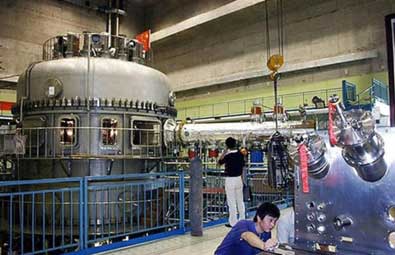
Nuclear Fusion 113 – Chinese And French Fusion Research Reactors Archive Record Plasma Confinement – Part 1 of 2 Parts
Part 1 of 2 Parts
China’s “artificial sun” reactor has broken its own world record for maintaining super-hot plasma. This marks another milestone in the long road towards near-limitless clean energy.
The Experimental Advanced Superconducting Tokamak (EAST) nuclear fusion reactor maintained a steady, highly confined loop of plasma for one thousand sixty-six seconds (eighteen minutes) on January 20th, 2025. This more than doubled its previous best of four hundred seconds. (seven minutes).
Nuclear fusion reactors are nicknamed “artificial suns” because they generate energy in a way that is similar to the Sun by fusing two light atoms into a single heavy atom via heat and pressure. The Sun has a lot more pressure than Earth’s fusion reactors, so scientists compensate by using temperatures that are many times hotter than the Sun
Nuclear fusion offers the potential of a huge power source without greenhouse gas emissions or much nuclear waste. However, scientists have been working on this technology for more than seventy years, and it is probably not progressing fast enough to be a practical solution to the climate crisis. Researchers expect us to have commercial fusion power plants within decades, but it could take much longer.
EAST’s new record won’t immediately usher in what is dubbed the “Holy Grail” of clean power. However, it is a step towards a possible future where commercial fusion power plants generate electricity.
EAST is a magnetic confinement reactor, or tokamak, which is designed to keep the plasma continuously burning for prolonged periods. Fusion reactors like this have never achieved ignition, which is the point at which nuclear fusion creates its own energy and sustains its own reaction. However, the new record is a step towards maintaining prolonged, confined plasma loops that future commercial fusion reactors will need to generate electricity.
Song Yunta is the Director of the Institute of Plasma Physics responsible for the fusion project at the Chinese Academy of Sciences. He said, “A fusion device must achieve stable operation at high efficiency for thousands of seconds to enable the self-sustaining circulation of plasma, which is critical for the continuous power generation of future fusion plants.”
EAST is one of a growing number of nuclear fusion reactors worldwide, but they all currently use far more energy than they produce. In 2022, the U.S. National Ignition Facility’s fusion reactor briefly achieved ignition in its core using a different experimental method to EAST. It relied on quick bursts of energy, but the reactor as a whole still used more energy than it consumed.
Tokamaks like EAST are the most common research nuclear fusion reactors. EAST heats up plasma and traps it inside a donut-shaped reactor chamber with powerful magnetic fields. For the latest Chinese EAST record, researchers made several upgrades to the reactor, including doubling the power of its heating system.
The data gathered by EAST will support the development of other fusion reactors, both in China and internationally. China is part of the International Thermonuclear Experimental Reactor (ITER) program. This project involves dozens of countries, including the U.S., U.K. Japan, South Korea and Russia.
The ITER reactor, which is being built in southern France, contains the world’s most powerful magnet and will be operational in 2039 at the earliest. ITER is an experimental tool designed to create sustained fusion for research purposes, but it could pave the way for commercial fusion power plants. Song said, “We hope to expand international collaboration via EAST and bring fusion energy into practical use for humanity.”Experimental Advanced Superconducting Tokamak
Please read Part 2 next
-

Nuclear Fusion 112 – SLAC National Accelerator Laboratory Working On System To Improve Proton Beam Generation
Researchers at the SLAC National Accelerator Laboratory have achieved a significant milestone in laser-plasma accelerator (LPA) technology. They have created fast, bright proton beams by using the power of a simple steam of water. This breakthrough addresses some long-standing challenges and moves LPA technology closer to real-world applications.
Siegfried Glenzer is the director of the High Energy Density Science division at the SLAC National Accelerator Laboratory. He said, “These exciting results pave the way for new applications of relativistic high-power lasers for applications in medicine, accelerator research, and inertial fusion.”Traditional particle accelerators, such as synchrotrons, use electromagnets to generate these proton beams. However, the massive size of the magnets limits their use in many settings.
LPAs offer a compact and cost-effective alternative. However, they also face several challenges. The researchers explained that “One challenge arises from the high-intensity laser, which destroys the targets after each pulse, requiring a new target for every shot. Another issue is the beam divergence – proton beams produced by LPAs typically spread out like a floodlight rather than maintaining a narrow focus.”
The new breakthrough at SLAC aims to resolve these issues. This advance was made possible by replacing a solid target with a thin stream of water. The researchers commented that “Instead of using a traditional solid target, they introduced a thin sheet of water – a self-regenerating stream that replenishes after each shot.”
This self-regenerating water sheet not only eliminates the need to replace the target after each laser pulse but also unexpectedly enhances the proton beam’s characteristics. When the high-intensity laser struck the sheet of water, the resulting evaporated water formed into a vapor cloud that interacted with the proton beam. This interaction generated magnetic fields, which focused the proton beam. This result of this interaction resulted in a significantly brighter and more tightly aligned proton beam.
Compared to experiments utilizing solid targets, the water sheet reduced beam divergence by one order of magnitude and increased efficiency by two orders of magnitude. The resulting proton beam exhibited great stability as it operated consistently at five pulses per second for hundreds of laser shots.
Griffin Glenn is a Stanford University PhD student and the second author of the report on the experiment. He said, “This effect was completely unexpected. This work has shifted the whole paradigm.”
The proton beam delivered the equivalent of 40 Gray with each shot, which is a standard radiation dosage used in proton therapies. This is an result never before achieved with LPAs at this repetition rate. This was accomplished using a readily available low-energy laser system. The use of a common laser system marked a significant step towards practical applications.
Glenn added, “Finally, we are no longer totally reliant on simulations. We can now drive the physics from an experimental point of view, testing different laser intensities, target densities, and environmental pressures.”
Researchers at the Lawrence Berkeley National Laboratory (Berkeley Lab) had already achieved a significant milestone in laser-plasma acceleration. They successfully accelerated electrons to an energy of ten billion electronvolts within twelve inches. -
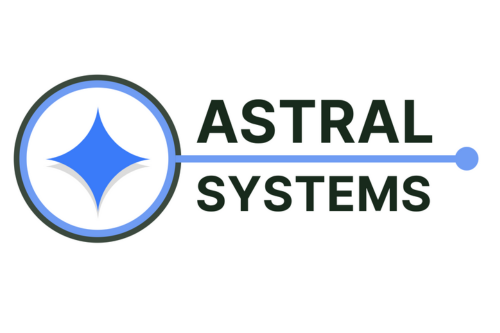
Nuclear Fusion 111 – Astral Systems Working On Lattice Confinement Fusion To Produce Radioactive Isotopes For Medical Applications
As cancer rates in the developed nations rise due to lifestyle and environmental pollution, so does the need for the nuclear isotopes used in detecting those cancers in a medical setting. But with many reactors built in the Seventies and Eighties being scheduled for shutdown and decommissioning, the nuclear isotopes used in medicine are becoming rarer and more expensive. Now, a startup from Bristol, U.K. hopes to increase production of these nuclear isotopes by using a new, radical, technology.
Talmon Firestone and Dr. Tom Wallace-Smith co-founded Astral Systems. They plan to utilize something called multistate fusion (MSF) technology in its “compact reactors.” This will enable an increase in the supply of nuclear isotopes used in modern medicine. These reactors are so compact that they could fit on the average desk.
Astral Systems has now closed over a four million fifty-seven-thousand-dollar investment led by Austria-based VC Speedinvest and U.K.-based Playfair. The company says that its approach will commercialize MSF technology, achieving better performance with greater efficiency and lower cost than traditional nuclear power reactors.
The approach employs what is referred to as lattice confinement fusion (LCF). This concept was first discovered by NASA. It can achieve solid-state fuel densities that are four hundred million times higher than those achievable normally, according to the company.
Astral Systems has developed and demonstrated the first of its kind multi-state fusion device. It enables orders of magnitude improved fusion rates on a reactor architecture that utilizes a quarter century of engineering design.
Leveraging earlier research from NASA, Astral Systems also claims that its platform could lead to other applications such as safe hybrid nuclear energy, space exploration, and industrial and security industry applications.
Astral Systems reactors can support a wide variety of medical, industrial, and research applications well before any fusion plant is plugged into the grid. The company is developing innovative system designs to address global challenges such as those in health access and zero carbon energy.
Astral Systems’ co-founder and CTO, Dr. Tom Wallace-Smith said in an interview, “The whole industry has been constrained of supply constraint historically because of reliance on centralized reactors.”
Wallace-Smith added, “Whereas what we’re proposing is placing them in industrial units or in the basement of hospitals or production centers. We can then produce the drugs exactly where they needed, and be able to reduce the reliance on these centralized production sites.”
Wallace-Smith believes that its competitors are constrained by existing technology. He said, “Most other approaches are based on linear, accelerated technology, whereas what we’re doing is essentially taking a very high TRL core architecture and putting in 2020 physics, where the ceiling is quite high in terms of performance. So we’re just at the start of what’s achievable with this.”
Rick Hao is a partner at Speedinvest. He said in a statement, “Astral Systems represents the best of U.K. deeptech. Astral is delivering a fresh approach to nuclear fusion that addresses urgent medical, industrial and power needs.” So far Astral has constructed three commercial fusion facilities from which it’s already generating revenues.
Also participating in the recent funding round were angel investors including Oliver Buck, founder of ITM Isotope Technologies, and Pete Hutton, former ARM president of Product Group.
Astral Systems -
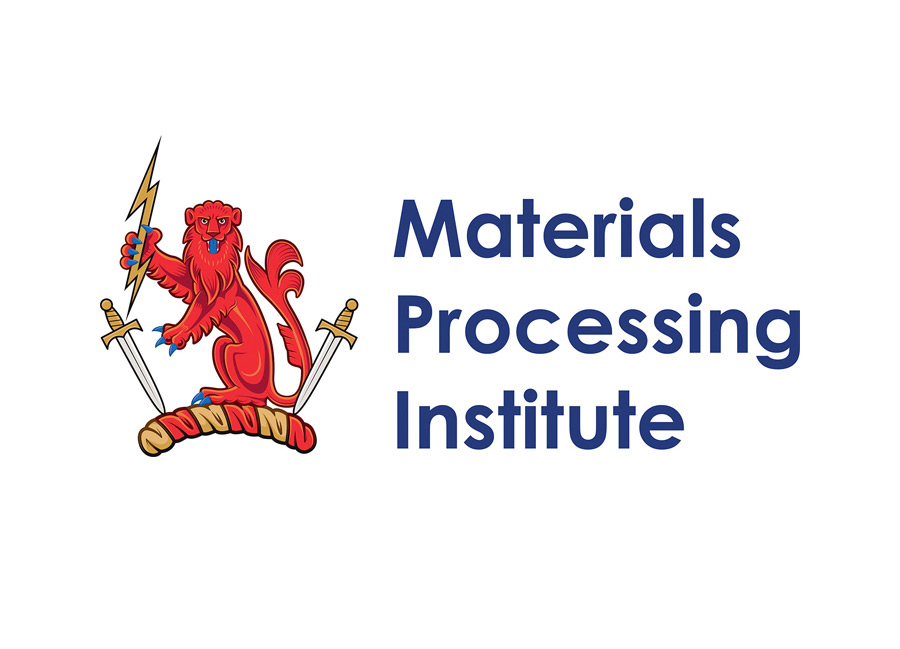
Nuclear Fusion 110 – U.K. Atomic Energy Authority Develops New Steel Alloy To Withstand Conditions Inside A Nuclear Fusion Reactor
A breakthrough in high-performance steel could remove one of the biggest obstacles to fusion energy which would bring the dream of unlimited clean power one step closer to reality.
Scientists at the U.K. Atomic Energy Authority (UKAEA) have succeeded in producing fusion-grade steel on a large scale. This is a major step toward making nuclear fusion a practical, cost-effective energy source.
One of the most serious challenges in getting fusion energy to work is to find materials that can survive the extreme heat and radiation inside a nuclear fusion reactor. Scientists at UKAEA’s Neurone consortium have developed a new type of steel alloy that can take temperatures up to twelve hundred degrees Fahrenheit and withstand heavy neutron exposure.
The new steel alloy is called fusion-grade Reduced-Activation Ferritic-Martensitic (RAFM) steel, a specialized material built for fusion reactors. This breakthrough, when produced at an industrial scale, could cut production costs by up to ten times. Lower costs are one of the keys to making fusion power plants commercially viable and speeding up their development. This could eventually stabilize energy prices and be affordable for consumers, particularly in regions where traditional energy infrastructure is expensive to maintain.
The Neurone consortium, a fifteen-million-dollar initiative, produced five- and one-half tons of fusion-grade steel using a seven-ton electric arc furnace at the U.K.’s Materials Processing Institute. This is the first time RAFM steel has been produced on such a big scale. It indicates that existing industrial facilities can handle making materials for fusion energy.
Dr. David Bowden leads materials science at UKAEA. He said in a UKAEA press release, “One of the major challenges for delivering fusion energy is developing structural materials able to withstand the extreme temperatures (at least up to twelve hundred degrees Fahrenheit) and high neutron loads required by future fusion powerplants.”
Fusion energy may not be lighting up homes just yet, but this new steel alloy could begin being tested in prototype fusion reactors within the next decade, according to UKAEA. If the steel survives testing and works for constructing nuclear fusion reactors, in the next twenty to thirty years, fusion energy could go commercial and potentially transform businesses, factories, and entire cities with a constant, carbon-free power source that doesn’t depend on dirty energy.
Fusion power is often referred to as the ultimate clean energy source because it could provide endless electricity without pollution or the long-term radioactive waste that comes with traditional nuclear power.
For fusion energy to really take off, it will have to fit into existing power grids alongside other clean energy technology. Improved energy storage, like next-generation batteries and hydrogen fuel, could help smooth out power from fusion reactors and keep the grid stable and efficient.
At the same time, big industries are looking for ways to reduce their carbon output with electrification and carbon capture. Fusion could change the way industries operate in this transition by providing a steady and reliable clean energy source.
UKAEA and its Neurone consortium are moving fusion energy closer to reality. With breakthroughs like next-generation steel alloys addressing key technical challenges, the possibility of unlimited, pollution-free power is nearly here.
Materials Processing Institute -
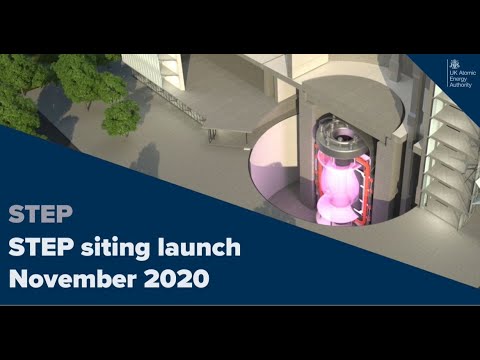
Nuclear Fusion 109 – Artificial Intelligence And Nuclear Fusion – Part 2 of 2 Parts
Part 2 of 2 Parts (Please read Part 1 first)
AI can help narrow the range of candidate materials for testing, characterize them based on their properties, and carry out real-time monitoring of those installed in fusion reactors. These capabilities allow the rapid screening and development of radiation-tolerant materials, reducing reliance on current time-intensive approaches.
AI also offers improved control of the plasma in fusion reactors. As discussed above, a key challenge in magnetic confinement fusion is to shape and maintain the high-temperature plasma within the fusion reactor.
However, the plasmas in these fusion reactors are inherently unstable. A control system needs to coordinate the tokamak’s many magnets, and adjust their voltage thousands of times per second to prevent the plasma from touching the walls of the vessel. This could lead to the loss of heat and potentially damage the materials inside the fusion reactor.
Researchers from the U.K.-based company Google DeepMind have utilized a form of AI called deep reinforcement learning to keep the plasma stable and to accurately sculpt it into different shapes. This allows researchers to understand how the plasma behaves under different conditions.
A team at Princeton University in the U.S. has also used deep reinforcement learning to forecast disturbances in fusion plasma known as “tearing mode instabilities,” up to three hundred milliseconds before they occur. Tearing instabilities are a major form of disruption that can occur, halting the fusion process. They happen when the magnetic field lines within a plasma break and create an opportunity for that plasma to escape the control system in a fusion reactor.
Work at the U.K. Atomic Energy Authority (UKAEA) is addressing critical challenges in materials performance and structural integrity by integrating a variety of techniques. These include machine learning models, for evaluating what’s known as the residual stress of materials. Residual stress is a way to measure performance that’s locked into materials during manufacturing or operation. It can seriously affect the reliability and safety of fusion reactor components under extreme conditions.
A key outcome of this work is the development of a technique that integrates data from experiments with a machine learning-powered predictive model to evaluate residual stress in fusion components.
This new technique has been validated through collaborations with leading institutions, including the National Physical Laboratory and UKAEA’s materials research facility. These developments provide efficient and accurate assessments of materials performance and have redefined the evaluation of residual stress. They have unlocked new possibilities for assessing the structural integrity of components used in fusion reactors.
This research directly supports the European Demonstration Power Plant (EU-DEMO) and the Spherical Tokamak for Energy Production (STEP) projects. These projects aim to deliver a demonstration fusion power plant and prototype fusion power plant, respectively, to scale. Their success depends on maintaining the structural integrity of critical components under extreme conditions.
By using many AI-based approaches in a coordinated way, scientists can ensure that fusion reactors are physically robust and economically viable, accelerating the path to commercialization. AI can be used to develop accurate simulations of fusion reactors that integrate insights from plasma physics, materials science, engineering, and other aspects of the process. By simulating fusion systems within these virtual environments, scientists can optimize reactor design and operational strategies.
Spherical Tokamak for Energy Production -
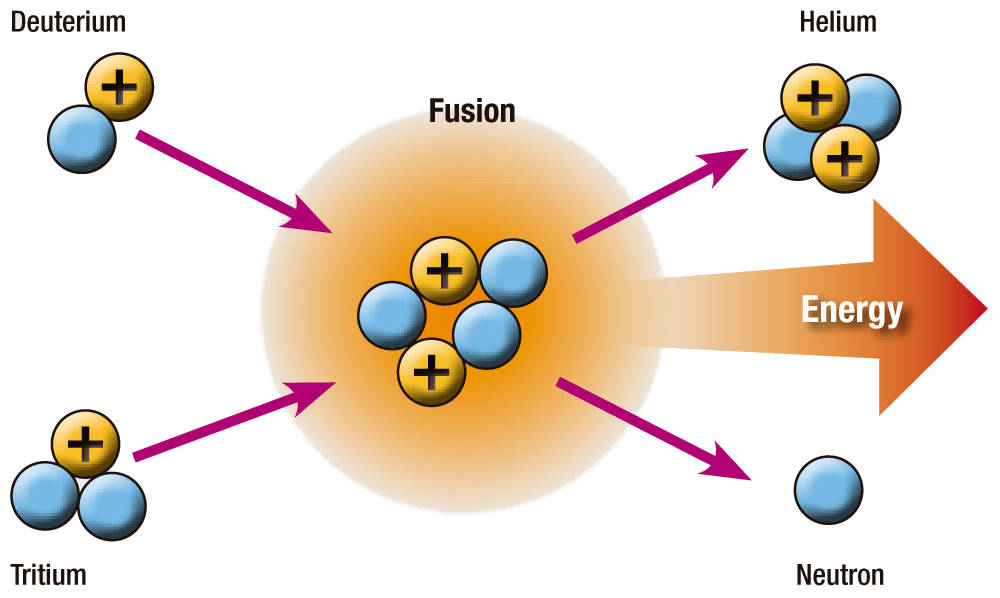
Nuclear Fusion 108 – Artificial Intelligence And Nuclear Fusion – Part 1 of 2 Parts
Part 1 of 2 Parts
The pursuit of nuclear fusion as a clean, sustainable energy source is one of the most challenging scientific and engineering goals of our time. Commercial fusion power promises nearly limitless energy without carbon emissions or long-living radioactive waste.
However, achieving practical fusion power requires solving significant challenges. These challenges come from the heat generated by the fusion process, the radiation produced, the progressive damage to materials used in fusion reactors, and other engineering problems. Fusion systems operate under extreme physical conditions, and they generate data at scales that surpass the ability of humans to analyze.
Nuclear fusion is the process that powers our Sun and other stars. Existing commercial nuclear power relies on a process called fission, where a heavy chemical element nucleus is split to produce lighter ones. Nuclear fusion works by combining the nuclei of two light elements to make a heavier one.
While physicists have been able to initiate and sustain fusion for short periods of time, getting more energy out of the process than the energy supplied to power the fusion device has been a serious challenge. So far, this has prevented the commercialization of this hugely promising energy source.
Artificial intelligence (AI) is emerging as a powerful and critical tool for managing the challenges of fusion research. It holds promise for dealing with the complex data and convoluted relationships between different aspects of the fusion process. This development not only enhances our understanding of fusion but also accelerates the development of new reactor designs.
By addressing these challenges, AI offers the potential to significantly compress timelines for the development of fusion reactors. It will pave the way for the commercialization of nuclear fusion.
AI is reshaping fusion research across academic, government, and commercial sectors which is driving innovation and progress toward a sustainable energy future. It can play a transformative role in addressing the challenges of developing materials for fusion reactors. These new materials must be able to withstand extreme thermal and neutron environments while maintaining structural integrity and functionality.
By connecting datasets from different experiments, simulations, and manufacturing processes, AI models can generate predictions and insights that can be acted on. Machine learning is a form of AI that can significantly accelerate the evaluation and optimization of materials that could be used in fusion reactors.
These include the doughnut-shaped fusion reactors called tokamaks used in magnetic confinement fusion (where magnetic coils are used to guide and control hot plasma, allowing fusion reactions to occur). The extremely hot plasma can damage the materials used in the interior walls of the tokamak, as well as irradiating them.
Machine learning involves the use of algorithms (a set of mathematical rules) that can learn from experimental data and apply those lessons to unseen problems. Insights from this form of AI are extremely critical for guiding the selection and validation of materials able to endure the harsh conditions inside fusion reactors. AI has allowed scientists to develop detailed simulations that permit the rapid evaluation of materials performance and their configurations within a fusion reactor. This approach helps ensure long-term reliability and cost efficiency.
Fusion Reaction
Please read Part 2 next
